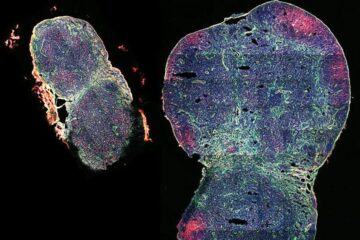Few People Want to Throw Away Old Clothes

The book describes different people’s relation to clothes and textiles – how they are consumed and then sorted out to be recycled in different ways. Today many people choose to get rid of textiles simply because they are tired of them and not because they are worn out.
Not long ago, worn-out clothes and textiles were considered recyclable material. Today they are more likely to end up at flea markets. However, some clothes seem to be harder to let go of.
‘The people who participated in the study said they tend to hold on to handmade textiles, their children’s first clothes and clothes and accessories typical for a certain era,’ says Anneli Palmsköld at the Department of Conservation, University of Gothenburg.
The study sheds light on different sorting processes, for example what people do when they dig through their wardrobes or visit a flea market. The evolution of recycling since the mid-1900s is also addressed, including modern innovations.
‘A common method is to sort clothes into three piles – one for stuff that needs to be mended, one for the donation drop box and one for the waste bin. Many people said that they sort out clothes that they haven’t used for some time,’ says Palmsköld.
Only 10 per cent of all clothes and textiles that end up at flea markets are re-sold, however. The rest go elsewhere, for example to homeless support. This was the case at the flea market, where the study was carried out.
‘The results of the study are largely related to ethics, or to people’s anguish over getting rid of perfectly functional clothes and textiles that they don’t want to use because they have gone out of style,’ says Palmsköld.
As part of the study, the author sorted textiles at a flea market, sent out a questionnaire in cooperation with the Nordiska museet museum, studied patched and mended textiles at the Halland Art Museum, and participated as a researcher in a school project concerning innovative ways to recycle textiles.
Anneli Palmsköld has a PhD in ethnology and works as a senior lecturer in conservation specialising in crafts at the Department of Conservation, University of Gothenburg.
Tel.: +46 (0)31 786 47 09, +46 (0)708 62 88 05.
E-mail: anneli.palmskold@conservation.gu.se
Media Contact
More Information:
http://www.gu.seAll latest news from the category: Studies and Analyses
innovations-report maintains a wealth of in-depth studies and analyses from a variety of subject areas including business and finance, medicine and pharmacology, ecology and the environment, energy, communications and media, transportation, work, family and leisure.
Newest articles

Red light therapy for repairing spinal cord injury passes milestone
Patients with spinal cord injury (SCI) could benefit from a future treatment to repair nerve connections using red and near-infrared light. The method, invented by scientists at the University of…

Insect research is revolutionized by technology
New technologies can revolutionise insect research and environmental monitoring. By using DNA, images, sounds and flight patterns analysed by AI, it’s possible to gain new insights into the world of…

Expanding a lymph node, boosting a vaccine
A biomaterial vaccine enhances and sustains lymph node expansion following vaccination, boosting anti-tumor immunity in an animal model. Each one of us has around 600 lymph nodes (LNs) – small,…





















